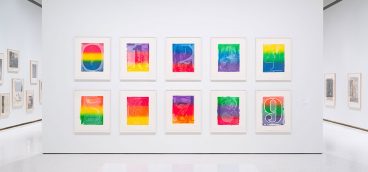
Each day, I post at least one photograph on Instagram. Most of my postings are of food or cocktails: my oatmeal highlighted by the morning light through my kitchen window, a beautiful loaf of sourdough bread from a local bakery, tomatoes perfectly ripened from my garden, a cocktail on my deck with the Pittsburgh skyline in the background. Why? I don’t know exactly, but I follow a lot of Instagrammers who do the same thing.
In fact, there are some 300 million users posting about 70 million photos daily on Instagram. Of those, Business Insider reports that in an 18-day period at the end of 2012, people posted 4,899 photos tagged with just one Cheesecake Factory location alone. Famed chef Jamie Oliver, host of “Food Revolution,” has 2.7 million followers. Pittsburgh chef Justin Severino, owner of Cure, has 3,139 followers; and his photos are food, food, food.
Though these numbers may be mind-boggling to some, the compulsion to record and share food on a “canvas” is nothing new. From the Lascaux cave paintings of hunted animals to the bread and figs rendered in a Pompeii fresco, the need to show what we eat is a strong one that stretches across history.
One sunny morning Lucy Stewart, associate curator for creative engagement at the Carnegie Museum of Art, shed some light on the history of food paintings as we walked up the long staircase toward the permanent collection. “In the Netherlands during the Dutch Golden Age of the 17th century, artists turned to still life to show their prowess, and often to send a moral message,” Stewart said. “These paintings show symbols representing life and death, and the artists often depict decaying fruits or vegetables. And then there are the representations of excess or ostentation—rare and exotic fruits and vegetables or other expensive foods.”
As we turned the corner she noted, “The quality of scale can be important. An intimate scale creates a sense of privacy. It seems personal because of the food.” In these kinds of images we feel privy to a special moment caught and held in time for us to see.
We stopped at Jean-Baptiste-Simeon Chardin’s “Glass of Water and Coffeepot,” a small canvas housed inside an ornate frame. Chardin gives us a glass of water, a coffee pot, some garlic bulbs, and what Stewart and I guessed to be oregano or mint. It isn’t a vast landscape with lolling women like his 18th-century peers. It’s a working person’s food world revealed. A beautifully composed painting snapshot.
“It’s coffee, not tea. That’s important,” Stewart said, pointing to the coffee pot and then to an ornate tea set displayed in a case in the center of the gallery. “Tea represents the elite classes. Here is the more rustic everyperson’s coffeepot.” It’s a simple, yet elegant food scene that might have been on a table one day and in the artist’s studio the next. “Beauty and simplicity was his concern,” Stewart said. “The reality is that artists have often turned to what’s around them. Objects in their daily lives are often interesting and pose different kinds of challenges—color, shape, meaning—it all factors in. The still life has become the staple of learning how to draw or paint what you see.”
This idea of learning about the world by recording what you see resonates profoundly with food. Award-winning food journalist Cara De Silva reminded me in a recent phone conversation that we are what we eat. “Food is one of the most important elements in our lives. It’s the cornerstone of everything because it becomes blood and bone,” she said. “It becomes us. It is one of the most profound identity markers—culturally and personally. There are very few things that have the power that food has.”
“There’s a resurgence in food identity right now in the U.S.,” noted cultural anthropologist Ken Rubin in another conversation. “In part, there’s a kind of need, because food is so vast and broad and covers so many aspects of human life, there’s a need that lives internally and externally in us to represent it.”
And so as humans we create altars and invent symbolism based upon food. We obsess over the unusual and the exotic and record it for ourselves and for others, for posterity and for our own satisfaction, to help define who we are. Over time we’ve used brushes and paint, 35mm film and Polaroids to capture important meals and beautiful bowls of fruit and dinner with friends. Cézanne famously said, “I will astonish Paris with an apple.” Warhol felt his iconic Pop Art Campbell’s soup can depicted the perfect American product. “I used to drink it,” he said. “I used to have the same lunch every day.”
When a friend posts a photograph of his raspberry almond tart that has fresh cream poured on top, there’s a connection to these same ideas: showing the excess; showing what special moment he had today; showing the beauty of this moment’s composition; showing what our food culture looks like for one person on this day.
At the museum, Stewart and I stopped to see Albert F. King’s “Late Night Snack.” It’s a stark painting featuring two bottles of beer, one bottle still stoppered, one unstoppered with a single glass poured from it. There’s a big wedge of Swiss cheese on a plate capped with a glass dome, some biscuits scattered in front and a mustard pot to the side. The dark backdrop adds to the intimacy of the scene. “Collectively looking at food and art you become surprised by the importance of the food,” Stewart said. “It’s often purposefully not elevated, but has a greater presence and meaning because of that.”
Both De Silva and Rubin agree that this new proliferation of food images on Instagram, Pinterest and other social media seems to be connected to frenetic globalization—the fast, sometimes too-quick technological connections we can make through time and space on our smart phones.
“Today, it’s possible to have an Instagram account instead of a little sketchbook,” DeSilva said. “I worry that part of what’s happening has to do with the state of the world. The world has become an incredibly insecure place. People turn to depictions of food and what they’ve eaten, and they create these images because of that… and what food means to us in our lives.”
Right now many of us are recording our time into our collective electronic sketchbooks, the private made public by a technology that infinitely and immediately links us to food culture across the globe.




